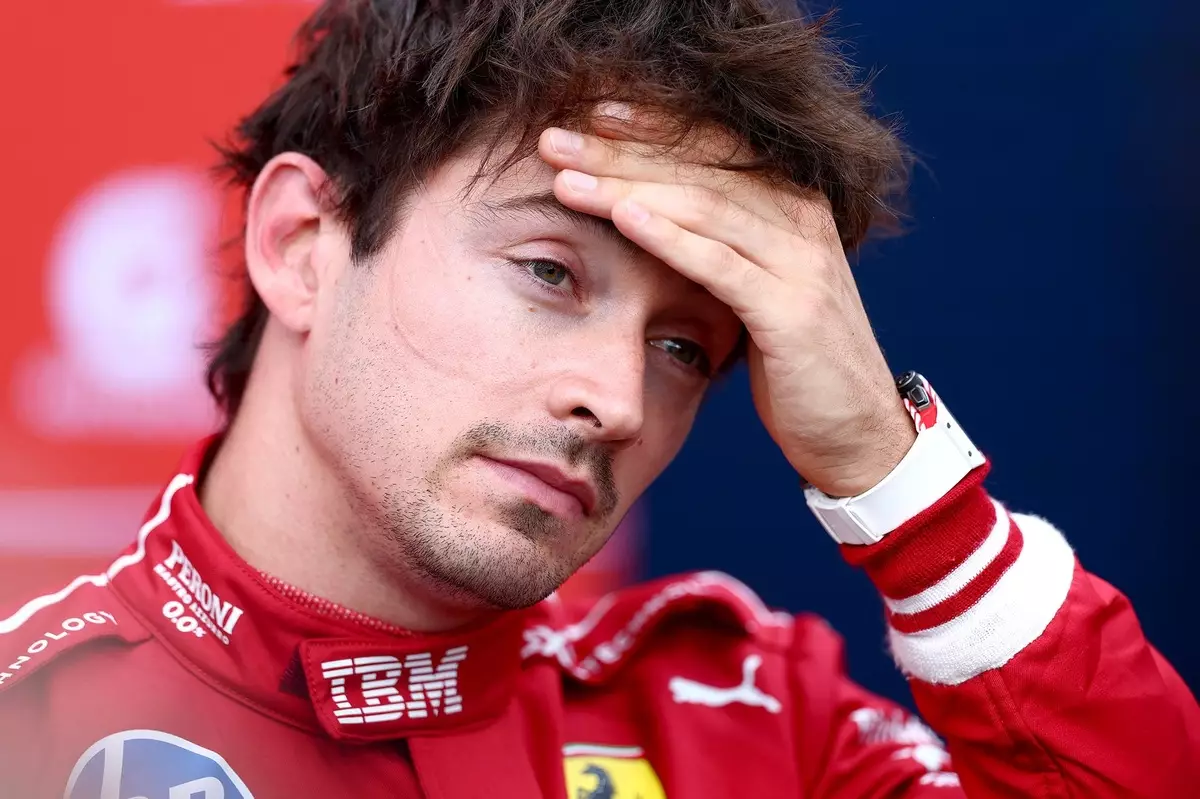In the high-octane universe of Formula 1, upgrades often serve as the headline-grabbing heroes, promising improvements and renewed competitiveness. However, a closer look at Ferrari’s recent performances reveals a troubling disconnect between superficial enhancements and actual on-track superiority. Despite introducing substantial aerodynamic upgrades—such as a redesigned underfloor, rear suspension modifications, and circuit-specific wing adjustments—Ferrari continues to lag behind the leaders. This persistent underperformance betrays a critical flaw: the misconception that hardware upgrades alone can secure victory without corresponding refinements in strategy, driver confidence, and development philosophy.
Ferrari’s recent efforts appear largely symbolic, creating an illusion of progress rather than catalyzing a paradigm shift. When Leclerc’s sprint race at Spa-Francorchamps showcased his initial heroics followed by a sobering slide backwards, it became evident that the car’s upgrade package was ineffective at bridging the gap with dominant teams like Red Bull or resilient contenders like McLaren. The narrative that the team is “close” to unlocking the car’s true potential masks deeper issues—such as fundamental aerodynamic shortcomings, underlying chassis integration problems, or perhaps an overreliance on hardware fixes instead of comprehensive engineering re-evaluation.
This pattern raises an essential question: Are teams like Ferrari genuinely improving, or are they merely treading water with minor tweaks while the athletic and strategic edge remains elusive? The truth is that advancements in racing technology are more than surface-level modifications; they demand a symbiosis of design, data analytics, driver feedback, and race-day adaptability. Ferrari’s slow progress suggests it is the latter—an overconfidence in their ability to manipulate technical components without addressing deeper systemic flaws.
The Illusion of Development Without Real Progress
Ferrari’s claim of “not being very far off” the car’s maximum potential echoes a common trope in Formula 1, often employed by teams trying to boost morale or deflect criticism. The reality, however, paints a different picture. The team’s performance points to a fundamental misjudgment: improvements in one area do not automatically translate to overall competitiveness. For instance, the introduction of a new underfloor designed to generate more ground effect has been met with muted results, indicating that the aerodynamic gains may not be harmonized with the car’s chassis, power unit, or tire management strategies.
Meanwhile, other teams push forward with a more integrated approach. McLaren’s Lando Norris, for example, demonstrated consistent pace and overtaking ability, underscoring that progress is often rooted in holistic development rather than piecemeal upgrades. Ferrari’s struggles highlight an industry-wide misconception: that hardware alone can compensate for strategic deficiencies or driver adaptation issues. The result is a cycle of incremental upgrades that fail to yield significant performance leaps, fostering frustration both within the team and among fans.
Moreover, the recent events at Spa, with Hamilton’s somewhat optimistic comments about upgrades and the team’s ineffectiveness in gaining track position, underscore an ongoing narrative—one of hope grounded in slight gains rather than decisive victories. The complexities of aerodynamics, chassis integration, and race strategy intertwine to craft a landscape where superficial upgrades often come across as bandaids rather than cures.
Philosophy and Focus: The Real Difference Makers
A broader, more insidious problem in Formula 1 is the disparity between technological investment and strategic foresight. Ferrari’s predicament exemplifies this tension: a team willing to spend vast resources on upgrades but potentially neglecting the importance of driver development, data-driven decision-making, and race-day adaptability. While McLaren and Red Bull optimize their entire ecosystem to maximize on-track performance, Ferrari seems caught in a mindset of reactive engineering—responding to issues with quick fixes rather than proactive innovation.
Charles Leclerc’s comments about “learning from races like this” suggest acknowledgment of the car’s shortcomings but also hint at underlying issues of confidence and development philosophy. The fact that Ferrari’s upgrades have failed to yield a significant competitive edge indicates that technological evolution must be complemented by a strategic cultural shift—one that fosters continuous learning, agility, and a willingness to unseat old paradigms.
Furthermore, the challenge extends beyond technical elements; it involves inspiring drivers, nurturing teamwork, and cultivating a mindset of relentless pursuit of excellence. Ferrari’s repeated underwhelming results serve as a stark reminder that Formula 1 is as much a mental game as a technical one. Victory requires coherence between engineering brilliance, driver confidence, strategic acumen, and organizational discipline—a synergy Ferrari appears to be struggling for.
Ultimately, the narrative of Ferrari’s ongoing struggles prompts a critical reflection: in this sport where innovation is relentless, superficial upgrades are destined to fall short unless they are part of a comprehensive, forward-thinking philosophy. Success is rooted not in the quantity of modifications but in their quality and integration. As the season unfolds, it becomes increasingly clear that Ferrari must go beyond the glamour of new parts and focus on cultivating a culture of innovation, resilience, and strategic clarity if they aspire to challenge the current hierarchy of F1 dominance.

